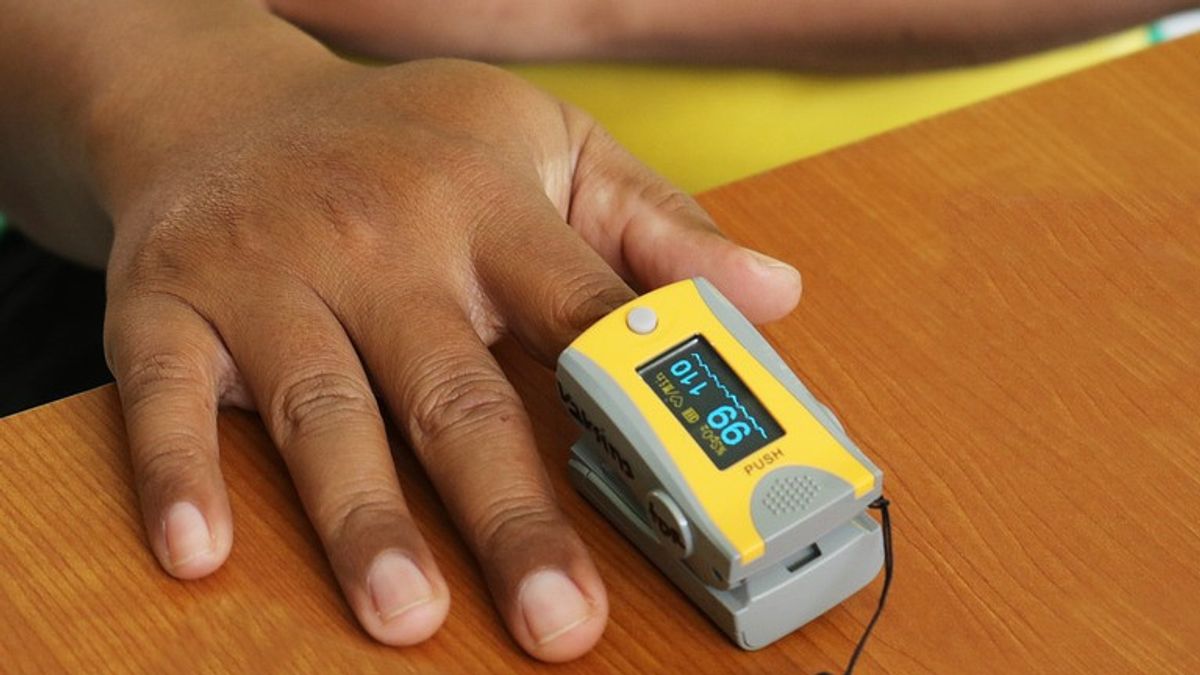JAKARTA - Medical device makers and scientists are working on new technologies to upgrade widely used devices that assess potential heart and respiratory problems, given the increasing evidence that present day could lead to inadequate health care for patients with darker skin.
Doctors have long known that the pulse's oximeter is less accurate in estimating blood oxygen levels in non-white patients, but the discrepancy is considered negligible. The COVID-19 pandemic reveals some real dangers of this weakness, as the device provides incorrect oxygen readings to patients with dark skin.
As a result, some patients face delays in COVID treatment or are denied treatment, and some are sent home from the emergency room instead of receiving treatment. The researchers found an increase in the disparity of health services experienced by non-white skin populations.
Expert advisers to the US Food and Drug Administration met virtually on Tuesday 1 November to discuss the standard increase in pulse oximeters.
The device, which is pinned to the tip of the finger, passes through red and infrared light through the skin and measures how much light is absorbed by oxygen-carrying hemoglobin. The dogmen melanin on the darker skin also absorbs light, and the device is currently not adjusting for that effect.
To address the issue, some researchers are testing devices that use other wavelengths of light that are not absorbed by melanin.
Among the furthest in development were sensors from Rockley Photonics Holdings that used spectrophotometers and laser instruments on the chip to emit broad light spectra, which the company said monitored not only blood oxygen but also hydration, blood pressure, and other biomarkers.
Rockley's Chief Executive, Andrew Rickman, told Reuters his company plans to start shipping products next month to companies that will pack them into wearable devices and other devices.
Their customers include Medtronic Plc, the main producer of the oximeter, which announced a partnership with Rockley in March. Unfortunately, it's not clear when the new devices will be available.
At Brown University, Kimani Toussaint and Rutindo Jakachira researchers experimented with light at wavelengths that were insensitive to melanin.
Valencia Koomson of Tufts University is also developing a device that takes into account the patient's skin tone and presence of melanin to better adjust oxygen levels estimates. All agree that a more accurate pulse oximeter has long been delayed.
The market research firm Imarc Group estimates that the global pulsational oximeter market will reach US$3.25 billion by 2027.
In recent years, studies have shown that low oxygen levels are more often undetected in adults and black infants, and that black patients receive less oxygen in addition than white patients with the same pain due to inaccuraccuracies in the pulse's oximeter.
COVID strengthens this risk. The coronavirus can cause a very low level of oxygen even before patients feel exhalation or appear to be in trouble, making health care providers increasingly dependent on accurate oximeter readouts.
"The problem of pulse oximeters has suddenly become "very large" during the pandemic," said Dr. Philip Bickler, director of the University of California's University of California's Hypoxy & Oksymeter Test Facility, San Francisco (UCSF), told Reuters.
Bickler, whose laboratory analyzes the accuracy of pulse oximeters for manufacturers, said he believes industry leaders "all work to overcome the device shortage."
Experts say the FDA needs to strengthen the criteria to approve new devices. Current rules require the pulse's oximeter to be tested in at least 10 subjects, only two of which must be "darkly segmented."
When more than 10 subjects are involved, only 15% must be non-white-shell, although some manufacturers carry out tests in larger and more racially balanced groups. The agency does not require standard assessment to classify skin pigmentation, a tool that would be essential in evaluating inaccuracies.
FDA staff speaking at a meeting last Tuesday acknowledged that although variables in sick patients affect accuracy, pulse oximeters are tested under "ideal" laboratory conditions in healthy individuals. Pediatric devices are tested in small adults rather than children or infants.
Prior to the meeting, several pulse oximeter manufacturers seemed open to discuss repairs while maintaining that their devices were working well.
Medtronic told Reuters they hoped to share perspectives and recommend ways that could collaborate with other industry members, standard organizations, doctors, researchers and academics to continue to strengthen this technology."
Medical technology company Masimo Corp said its equipment had no "bias problem between black and white subjects." "But we will continue to increase our pulse oximeter," Masimo Corp told Reuters,
The English, Chinese, Japanese, Arabic, and French versions are automatically generated by the AI. So there may still be inaccuracies in translating, please always see Indonesian as our main language. (system supported by DigitalSiber.id)










